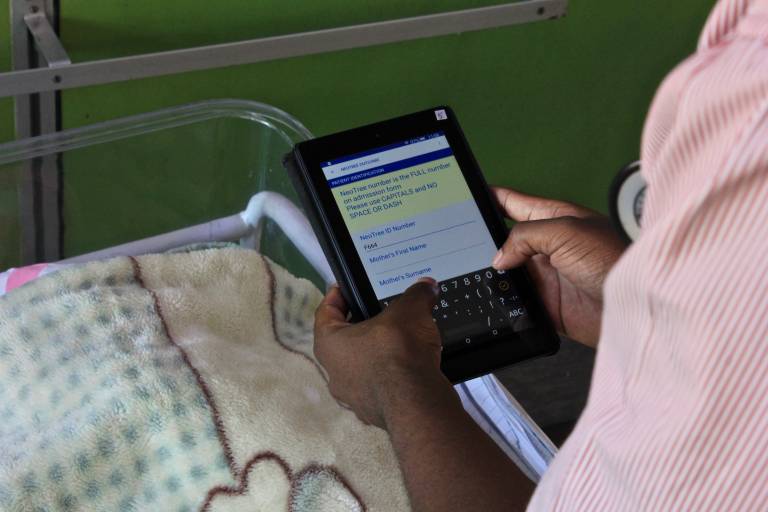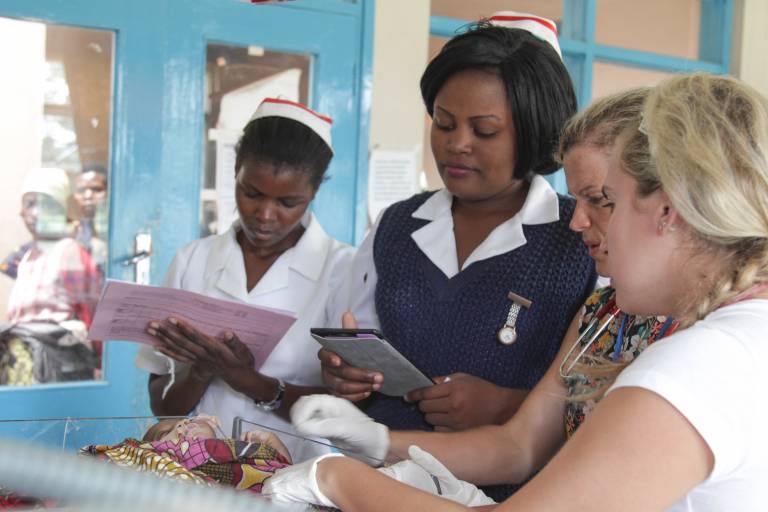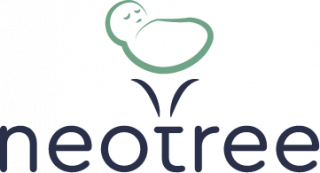Informed by initial discussions with teams in Bangladesh, we have worked with teams in Malawi, Zimbabwe and the UK over the last seven years to co-develop the Neotree digital system for postnatal newborn care using open-source code and maintaining local data ownership.
The Neotree system has three main functionalities:
- Digital data capture and transfer
Using low-cost android tablets at the bedside, healthcare workers capture clinical and demographic data on newborns on admission, discharge and from laboratory data using the Neotree app. The tablets work offline, synchronising with a network when available. Data are linked and then transferred to local (hospital) and national (Ministry of Health) individual and aggregate data systems (District Health information software v2).
The data are visualised via low-cost hardware (a small computer: raspberry pii - linked to screens) and open-source data visualisation software (Metabase).The Neotree app has and can be readily adapted to incorporate new disease trends in outbreak situations such as COVID-19. An open-source development process means the software can be adopted by any hospital/government who can then tailor data input fields locally without needing remote software support or creating commercial dependencies.

- Clinical decision support
The clinical decision support function of the Neotree app was developed in two parts. First, national and international standardised neonatal resuscitation guidelines were digitialised and incorporated into the Neotree (e.g. if a baby was not breathing advice was immediately given on how to resuscitate).
Second, a larger set of clinical decision support algorithms were also developed following national and international guidelines and evidence in newborn care. These were conceptualised but not implemented as we identified significant gaps in evidence-based guidance suitable for low resource settings. For example, the European definition of neonatal sepsis is two or more clinical symptoms and two or more laboratory signs in the presence of, or as a result of, suspected or proven infection. This definition is not possible in low resource settings where laboratory investigations are not routinely available.

In 2017-2018, a Delphi study was conducted to determine whether a panel of 22 neonatal experts with global expertise could address evidence gaps in neonatal guidelines included in the Neotree: sepsis, neonatal encephalopathy, respiratory distress and thermoregulation. We are working at the moment to refine these and other diagnostic decision algorithms ready to implement and evaluate Autumn 2021.
- Educational content
The Neotree’s clinical decision and management support function is also integrated with educational messaging in the form of brief text and pictures to support healthcare workers to manage conditions such as respiratory distress and hypothermia, in line with international and national guidelines.
 Close
Close


